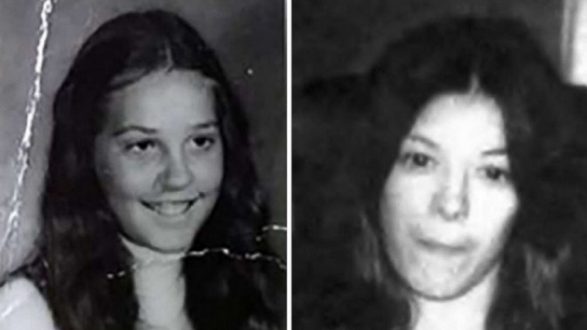
 El Dorado County District Attorney(LOS ANGELES) — An 11-year-old girl, strangled to death in Southern California in 1973, her killer gone without a trace.
El Dorado County District Attorney(LOS ANGELES) — An 11-year-old girl, strangled to death in Southern California in 1973, her killer gone without a trace.
A 27-year-old woman whose body was left in a shallow grave in South Lake Tahoe, California, in 1977.
And yet another young victim, a 20-year-old woman who was sexually assaulted and killed with an electric cord in her Portland apartment in 1979.
These are among the victims who suffered untimely and mysterious deaths decades ago whose loved ones have gotten closer to delayed justice this year through the novel investigative technique of genetic genealogy.
In the first two months of 2019, suspects — some of whom have already died — were identified in at least six previously unsolved killings of young women and girls across the U.S. through the new, but controversial, technique.
Genetic genealogy takes an unknown killer’s DNA from a crime scene and identifies the suspect through his or her family members, who voluntarily submit their DNA to genealogy databases. This allows police to create a much larger family tree than using regular law enforcement databases, in which an exact match to the suspect is needed in most states, according to CeCe Moore, chief genetic genealogist with Parabon NanoLabs, which has worked on the majority of the cases.
“We’ve been using these types of websites and technology for people of unknown parentage and people to learn more about their ancestry for about a decade. It’s new to use it for crime scenes,” Moore said. “Crime scene DNA is now being compared to the DNA of the people that have uploaded their DNA into these genealogy websites. And from that we can reverse engineer and help identify suspects in these cold cases.”
The first public arrest through genetic genealogy was in April with the identification of the suspected “Golden State Killer,” a serial rapist and murderer who plagued California in the 1970s and 1980s and had been unidentified for decades.
Since the suspected “Golden State Killer”‘s arrest, genetic genealogy has helped identify more than three dozen suspects in violent crimes, said Moore.
Among those solved this year was the murder of 20-year-old Sophie Sergie, whose body was found sexually assaulted, stabbed and shot in a dorm bathroom at the University of Alaska Fairbanks in 1993.
DNA from Sergie’s unknown killer was recovered at the crime scene and uploaded to CODIS — the Combined DNA Index System, a law enforcement database — but no suspect was identified, according to Alaska State Troopers.
Decades went by without progress in her mysterious murder — until April, when the cold case unit in Alaska learned of genetic genealogy’s use in the “Golden State Killer” case.
Steven Downs was tracked down through family members’ DNA submissions to a genealogy database. Once it was confirmed his DNA matched the DNA left behind from Sergie’s sexual assault, he was taken into custody in February, officials said.
Downs was a student at the University of Alaska Fairbanks in 1993 and was living in the same building where Sergie was found, according to the charging document. He’s had no previous arrests and his DNA had never been uploaded to the national database, the charging document said.
Downs was taken into custody in Maine, where he had been living, and has formally challenged extradition, his attorney James Howaniec told ABC News Friday.
Downs is “stunned” by the allegations and is “absolutely denying the charges,” Howaniec said.
“As far as I know he had an alibi for where he was at the time,” he added.
Howaniec is skeptical about how DNA was gathered, saying of the genetic genealogy process, “We don’t really know whether it meets any sort of protocols.”
Downs is scheduled to return to court on March 20.
The technique and an arrest in February brought the family of 11-year-old Linda O’Keefe, who was strangled to death in Southern California in 1973, one step closer to finding closure.
DNA recovered from Linda’s body was put into the CODIS, but there was no hit, prosecutors said.
Through genealogical DNA, investigators matched that crime scene DNA to the DNA of James Neal.
Neal lived in Southern California in the 1970s and worked in construction at the time of the crime, officials said. After the alleged killing he went to Florida, where he changed his name, officials said.
Neal, who was arrested in Colorado, appeared in court Thursday and waived extradition to California, said El Paso County Sheriff’s Department spokeswoman Jacqueline Kirby.
O’Keefe’s parents died before an arrest came and “never had the closure and peace that came with knowing who the individual was,” Cindy Borgeson, Linda’s sister, told ABC News Wednesday.
“My mother felt guilt-ridden the rest of her life. My father was full of rage the rest of his life,” Borgeson said.
But she added that she believes her parents and slain sister “are in heaven rejoicing right now.”
Though families are breathing a sigh of relief, as law enforcement’s use of genetic genealogy ramps up, some are concerned the tool is an invasion of privacy.
The growing number of arrests caught the attention of Charles Sydnor, a Democratic member of Maryland’s House of Delegates, who has introduced a bill in an effort to prevent genealogy databases searches for identifying suspects through family member’s DNA.
For Sydnor, it comes down to constitutionality.
“I was elected and one of my jobs is to ensure the government follows the constitution,” Sydnor told ABC News Friday. “Our committee will be looking at this issue this summer.”
House Bill 30, introduced by Sydnor in January, says, “Each DNA record of identification characteristics that results from DNA testing under this subtitle shall be stored and maintained only by the Crime Laboratory in the statewide DNA data base system, except as necessary to participate in CODIS [the law enforcement database].”
“A person may not perform a search of the statewide DNA data base or any other DNA or genealogical database for the purpose of identification of an offender in connection with a crime for which the offender may be a biological relative of the individual from whom the DNA sample was acquired,” the bill said.
Vera Eidelman, an attorney with the American Civil Liberties Union (ACLU), understands the public’s concern.
“DNA is deeply private and sensitive and can reveal so much about an individual. It’s essentially a blueprint to us,” Eidelman said. “It can enable us to learn who are family members are, what our ancestry is, our predisposition for certain medical conditions… and who knows where science can go.”
Eidelman called it “incredibly troubling to think about that same information going into the hands of law enforcement without a warrant and without clear notice and consent.”
Eidelman also stressed how “one person uploading their genetic material, because of the way DNA works scientifically, also implicates the sensitive information and private details of so many family members.”
To Eidelman, law enforcement’s use of genetic genealogy in cold case murders and sex assaults is a slippery slope.
“I can only imagine how this will expand to other sorts of crimes,” she said. “Right now we’re discussing this in the context of cold murder and rape cases, but I wonder what will stop law enforcement from using similar investigative techniques to go after trespassers or purse snatchers.”
But Moore, the genetic genealogist, stressed, “This issue should be decided by individual choice of the participants and not lawmakers.”
“As long as the people who have contributed their DNA profiles to the databases to which law enforcement has access have consented to and are supportive of the use of their DNA for this purpose, it should be allowed,” Moore said.
Usually, those who submit their DNA to direct-to-consumer testing sites, like AncestryDNA and 23AndMe, are doing it for the purposes of family history and family searches — and direct-to-consumer sites generally do not allow their DNA samples to be searched by authorities, Moore said. Genealogy databases, however, permit people to upload their DNA information to compare between direct-to-consumer company results, and those samples are widely available for searches.
“Genetic genealogy analysis of crime scene DNA is making society safer for all of us, but especially the most vulnerable members of our communities, and conserving valuable law enforcement resources by making violent crime investigations more efficient,” Moore said. “I have witnessed up close what it has meant to families of victims, and victims themselves, to finally have answers and the opportunity for resolution in the cases where genetic genealogy has been used to successfully identify a suspect when all other avenues of investigation have failed.”
Borgeson, for whom the issue is personal, does not consider the use of genetic genealogy by law enforcement to be an invasion of privacy.
“If you’ve committed a crime, a felony, I feel like your rights are suspended,” Borgeson said.
Borgeson urges police departments to consider genetic genealogy and hopes other families who have waited for decades can get the same closure she has.
“It’s helping law enforcement find these people and bring them to justice,” Borgeson said. “It’s just remarkable.
“I really didn’t think the day would ever come,” she said of seeing a suspect in custody for her 11-year-old sister’s slaying. “I really just thought he was gone in the wind.”
Copyright © 2019, ABC Radio. All rights reserved.










